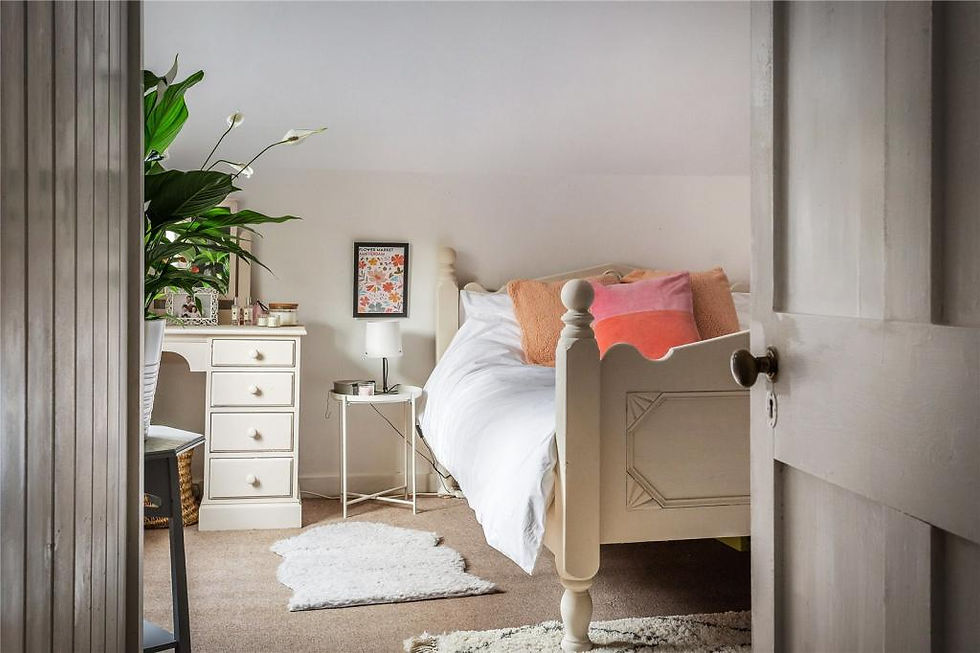The Impact of Lighting on Architectural Structures
- James Morris

- Jul 7
- 4 min read
Lighting is a fundamental aspect of architectural design. It defines spaces, enhances beauty, and creates an atmosphere that can significantly affect how structures are perceived. Understanding the impact of lighting on architectural structures can help designers, architects, and homeowners make thoughtful decisions about their designs.

Architectural Lighting: A Vital Element in Design
Architectural lighting goes beyond mere functionality. It serves to highlight features, create ambiance, and enhance safety. The thoughtful integration of natural and artificial light can breathe life into any structure.
For instance, consider the influence of natural light in open-plan living spaces. Large windows not only bring in light but also provide a visual connection to the outside world, making spaces feel larger and more inviting. Moreover, sunlight can dramatically change how materials look throughout the day—brick, wood, and metal can all take on different qualities when bathed in natural light.
Artificial lighting also plays a crucial role, as it allows for flexibility and control over a space's brightness. Adjustable lighting can be used to alter moods; brighter lights are generally energizing, while softer lighting can create a calmer atmosphere.
The Role of Light in Highlighting Architectural Features
Different architectural features can be emphasised using various lighting techniques. For example, uplighting can accentuate tall ceilings and elegant arches, creating a grand ambiance. On the other hand, downlighting can focus attention on artwork or sculptures, presenting them as the focal point within a room.
Another powerful technique is the use of colored lighting, which can completely change a space's feel. For instance, blue lighting might evoke a sense of calmness, while red can create a space that feels warm and inviting. Additionally, the right lighting can enhance textures—reflections on glass surfaces or shadows on textured walls can add depth and complexity.
When planning a lighting design, it's essential to consider the direction, intensity, and color temperature of light sources. Combining these elements effectively can elevate the overall aesthetic.
Lighting and Sustainability in Architectural Design
In recent years, sustainability has become an essential consideration in architectural design. Sustainable lighting solutions not only reduce energy consumption but also have a positive impact on the environment.
LED lighting is a popular choice for architects looking to create energy-efficient designs. They consume significantly less energy than traditional bulbs and have a longer lifespan. Furthermore, daylighting strategies that utilise natural light can reduce reliance on artificial lighting during daylight hours. Incorporating skylights or clerestory windows can be an effective way to bring natural light deep into a structure.
Statistics show that buildings using smart lighting systems can achieve up to 50% energy savings compared to conventional lighting. These systems can adjust based on occupancy or natural light levels, ensuring that energy is used efficiently.
By incorporating sustainable practices, architects can enhance the longevity of their structures and minimize environmental impact, all while creating visually stunning spaces that invite appreciation.
Lighting as a Tool for Spatial Perception
The way light is employed in architectural design can profoundly influence how we perceive a space. Properly placed lighting can make narrow hallways feel wider or low-ceilinged rooms feel taller. This phenomenon is known as spatial perception, which relies heavily on how light and shadow interact within a space.
For example, in a home with lower ceilings, using wall sconces can draw the eye upward, creating an illusion of height. Similarly, carefully placed floor lamps and lampshades can distribute light evenly, avoiding harsh shadows that may trap space.
Designers also use layered lighting that combines ambient, task, and accent lighting to create dimension. Ambient lighting provides overall illumination, task lighting focuses on specific areas for practicality, and accent lighting highlights art or architectural details. This deliberate layering can create a dynamic and functional environment.
The Emotional Impact of Lighting in Architecture
Lastly, the emotional resonance of lighting should be not underestimated in architectural design. Light has a direct effect on human psychology. Studies have shown that well-lit spaces can enhance mood, boost productivity, and improve overall well-being.
In commercial spaces, the right lighting can influence customer behavior. For example, soft, warm lighting in a restaurant can make diners feel more relaxed, encouraging them to linger longer over meals. In contrast, bright, cool-toned lighting in a retail environment can create urgency, motivating customers to make quick purchases.
For residential spaces, lighting can evoke nostalgia with a warm glow reminiscent of candlelight, or can promote focus with bright, white lights ideal for workspaces. The strategic use of lighting helps in designing spaces that not only accommodate functionality but also cater to emotional comfort.
Final Thoughts on Architectural Lighting
As we've explored, lighting is a powerful design tool that can transform architectural structures in significant ways. From highlighting features and enhancing sustainability to influencing spatial perception and emotional responses, the impact of lighting cannot be overstated.
For anyone involved in architectural design, understanding the multifaceted role of lighting is crucial. Whether through strategic placement of fixtures or the clever use of natural light, the possibilities are immense. Drawing from innovative techniques and sustainable practices will ensure that lighting continues to enhance the beauty and function of architectural structures for years to come.
For those looking to delve into the world of architectural upgrades, including outdoor architectural lighting, exploring the best solutions can lead to transformative results. Discovering tailored lighting solutions can make your architectural vision a reality; starting with understanding how light interacts with structure is key to unlocking unparalleled design potential.




Comments